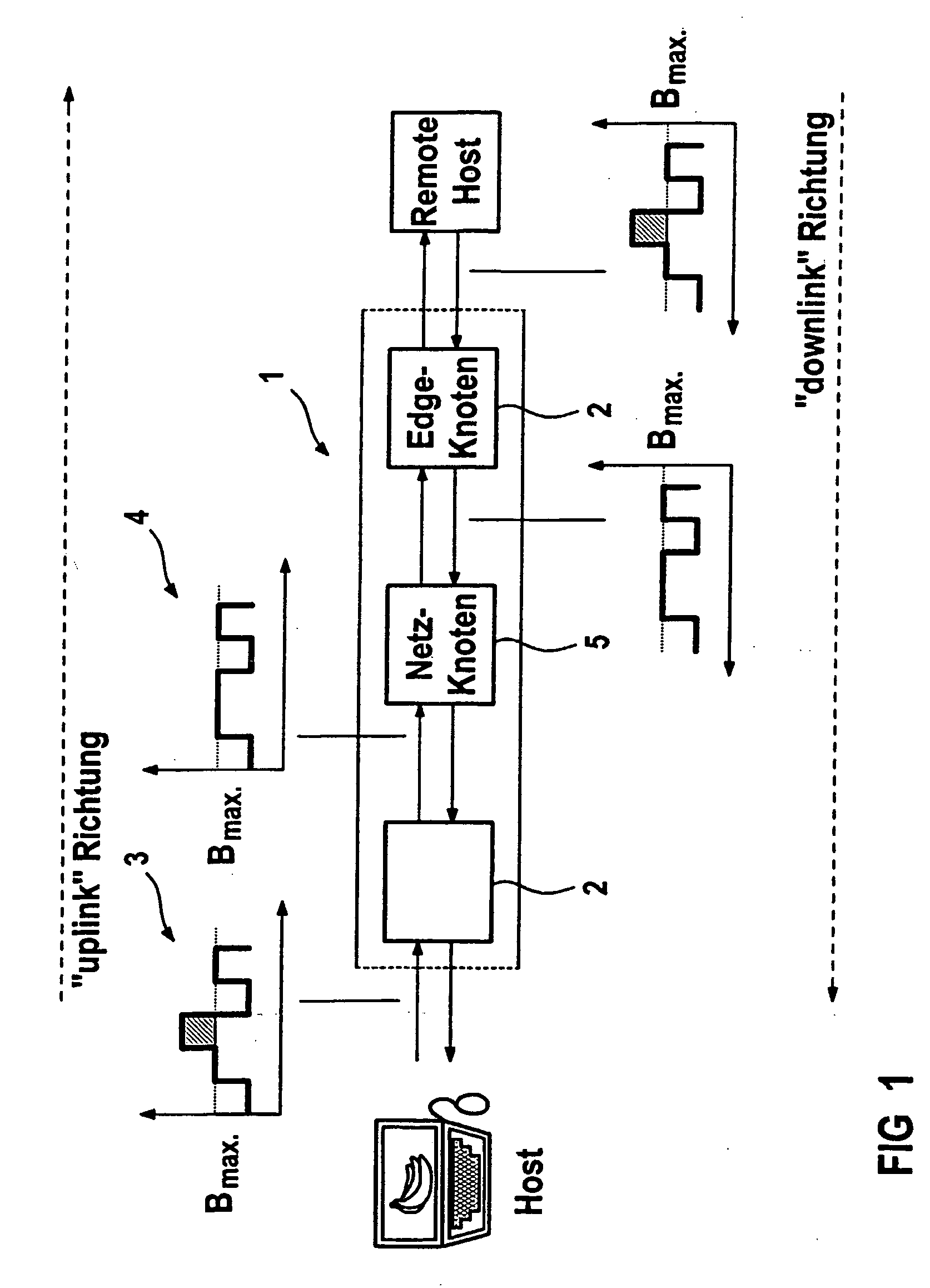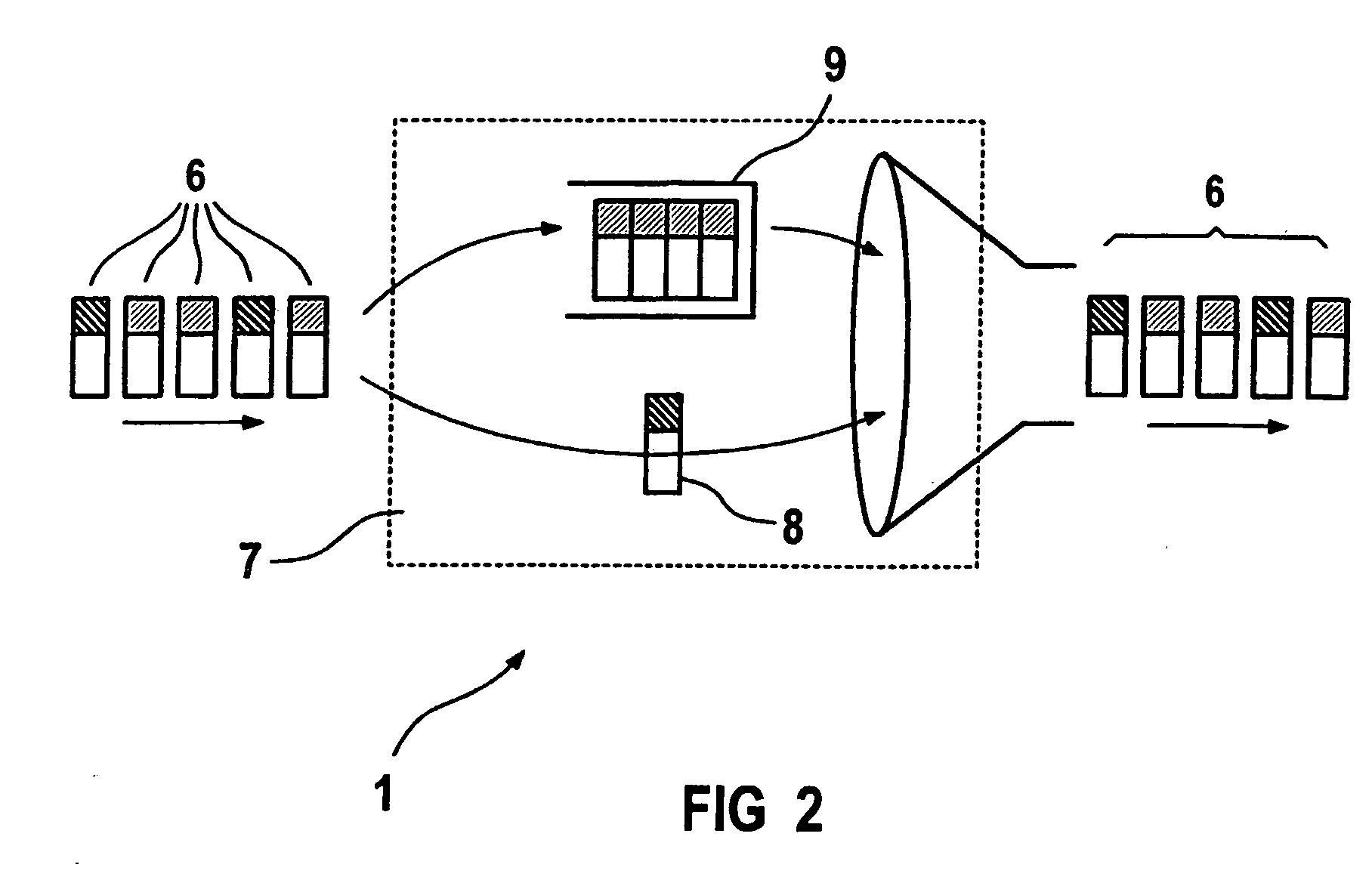Method for transmitting data from applications with different quality
a data transmission and data technology, applied in the field of transmitting data from applications, can solve the problems of inability to guarantee the transmission time and transmission rate of data packets within the data communication network, the delay of data packets requiring transmission in real time, and the buffer stored in every queue, etc., to achieve the effect of a large number of different paths of different quality between different communication nodes and the cost of setting up and operating a large number of different paths
- Summary
- Abstract
- Description
- Claims
- Application Information
AI Technical Summary
Benefits of technology
Problems solved by technology
Method used
Image
Examples
Embodiment Construction
[0029]FIG. 1 shows a block diagram to describe a possible way of limiting data for an application to a prescribed bit rate. An application's data reach the data communication network 1 via an access node (edge node) 2. To achieve the shortest possible delay at the edge node 2 and to dispense with buffer storage for the purpose of ascertaining the bit rate of the incoming data, this behavior can be produced in the following manner: over a particular interval of time (measurement interval), the size of incoming data packets is summed in parallel with their forwarding, as indicated by the “uplink” direction arrow, this situation being shown in graph 3. This value reflects the volume of data in this time interval. If the maximum permissible volume of data corresponding to the maximum bit rate Bmax is reached within this interval, then this information can be used to decide whether subsequent data are rejected, as shown in graph 4, or are possibly transported further, since the total res...
PUM
 Login to View More
Login to View More Abstract
Description
Claims
Application Information
 Login to View More
Login to View More - R&D
- Intellectual Property
- Life Sciences
- Materials
- Tech Scout
- Unparalleled Data Quality
- Higher Quality Content
- 60% Fewer Hallucinations
Browse by: Latest US Patents, China's latest patents, Technical Efficacy Thesaurus, Application Domain, Technology Topic, Popular Technical Reports.
© 2025 PatSnap. All rights reserved.Legal|Privacy policy|Modern Slavery Act Transparency Statement|Sitemap|About US| Contact US: help@patsnap.com



